Running the Spark's example for Word2Vec, I realized that it takes in an array of string and gives out a vector. My question is, shouldn't it return a matrix instead of a vector? I was expecting one vector per input word. But it returns one vector period!
Or maybe it should have accepted string, instead of an array of strings (one word) as input. Then, yeah sure, it could return one vector as output. But accepting an array of strings and returning one single vector does not make sense to me.
[UPDATE]
Per @Shaido's request, here's the code with my minor change to print the schema for the output:
public class JavaWord2VecExample {
public static void main(String[] args) {
SparkSession spark = SparkSession
.builder()
.appName("JavaWord2VecExample")
.getOrCreate();
// $example on$
// Input data: Each row is a bag of words from a sentence or document.
List<Row> data = Arrays.asList(
RowFactory.create(Arrays.asList("Hi I heard about Spark".split(" "))),
RowFactory.create(Arrays.asList("I wish Java could use case classes".split(" "))),
RowFactory.create(Arrays.asList("Logistic regression models are neat".split(" ")))
);
StructType schema = new StructType(new StructField[]{
new StructField("text", new ArrayType(DataTypes.StringType, true), false, Metadata.empty())
});
Dataset<Row> documentDF = spark.createDataFrame(data, schema);
// Learn a mapping from words to Vectors.
Word2Vec word2Vec = new Word2Vec()
.setInputCol("text")
.setOutputCol("result")
.setVectorSize(7)
.setMinCount(0);
Word2VecModel model = word2Vec.fit(documentDF);
Dataset<Row> result = model.transform(documentDF);
for (Row row : result.collectAsList()) {
List<String> text = row.getList(0);
System.out.println("Schema: " + row.schema());
Vector vector = (Vector) row.get(1);
System.out.println("Text: " + text + " => \nVector: " + vector + "\n");
}
// $example off$
spark.stop();
}
}
And it prints:
Schema: StructType(StructField(text,ArrayType(StringType,true),false), StructField(result,org.apache.spark.ml.linalg.VectorUDT@3bfc3ba7,true))
Text: [Hi, I, heard, about, Spark] =>
Vector: [-0.0033279924420639875,-0.0024428479373455048,0.01406305879354477,0.030621735751628878,0.00792500376701355,0.02839711122214794,-0.02286271695047617]
Schema: StructType(StructField(text,ArrayType(StringType,true),false), StructField(result,org.apache.spark.ml.linalg.VectorUDT@3bfc3ba7,true))
Text: [I, wish, Java, could, use, case, classes] =>
Vector: [-9.96453288410391E-4,-0.013741840076233658,0.013064394239336252,-0.01155538750546319,-0.010510949650779366,0.004538436819400106,-0.0036846946126648356]
Schema: StructType(StructField(text,ArrayType(StringType,true),false), StructField(result,org.apache.spark.ml.linalg.VectorUDT@3bfc3ba7,true))
Text: [Logistic, regression, models, are, neat] =>
Vector: [0.012510885251685977,-0.014472834207117558,0.002779599279165268,0.0022389178164303304,0.012743516173213721,-0.02409198731184006,0.017409833287820222]
Please correct me if I'm wrong, but the input is an array of strings and the output is a single vector. And I was expecting each word to be mapped into a vector.


